You can exhale now: NASA's Perseverance rover has landed safely on Mars.
The car-sized Perseverance, the most advanced robot ever sent to the Red Planet, aced its "seven minutes of terror" touchdown this afternoon (Feb. 18), alighting gently on an ancient lakebed inside the 28-mile-wide (45 kilometers) Jezero Crater shortly before 4 p.m. EST (2100 GMT).
After a series of instrument and hardware checkouts, Perseverance will start doing what it crossed interplanetary space to do: hunt for signs of ancient Mars life, collect and cache rock samples for future return to Earth and demonstrate some shiny new exploration technologies, among other things.
"I don't think we've had a mission that is going to contribute so much to both science and technology," NASA Acting Administrator Steve Jurczyk told Space.com earlier this week . "It's going to be truly amazing."
Perseverance rover's Mars landing: Everything you need to know
Related: NASA's Mars 2020 rover mission in pictures
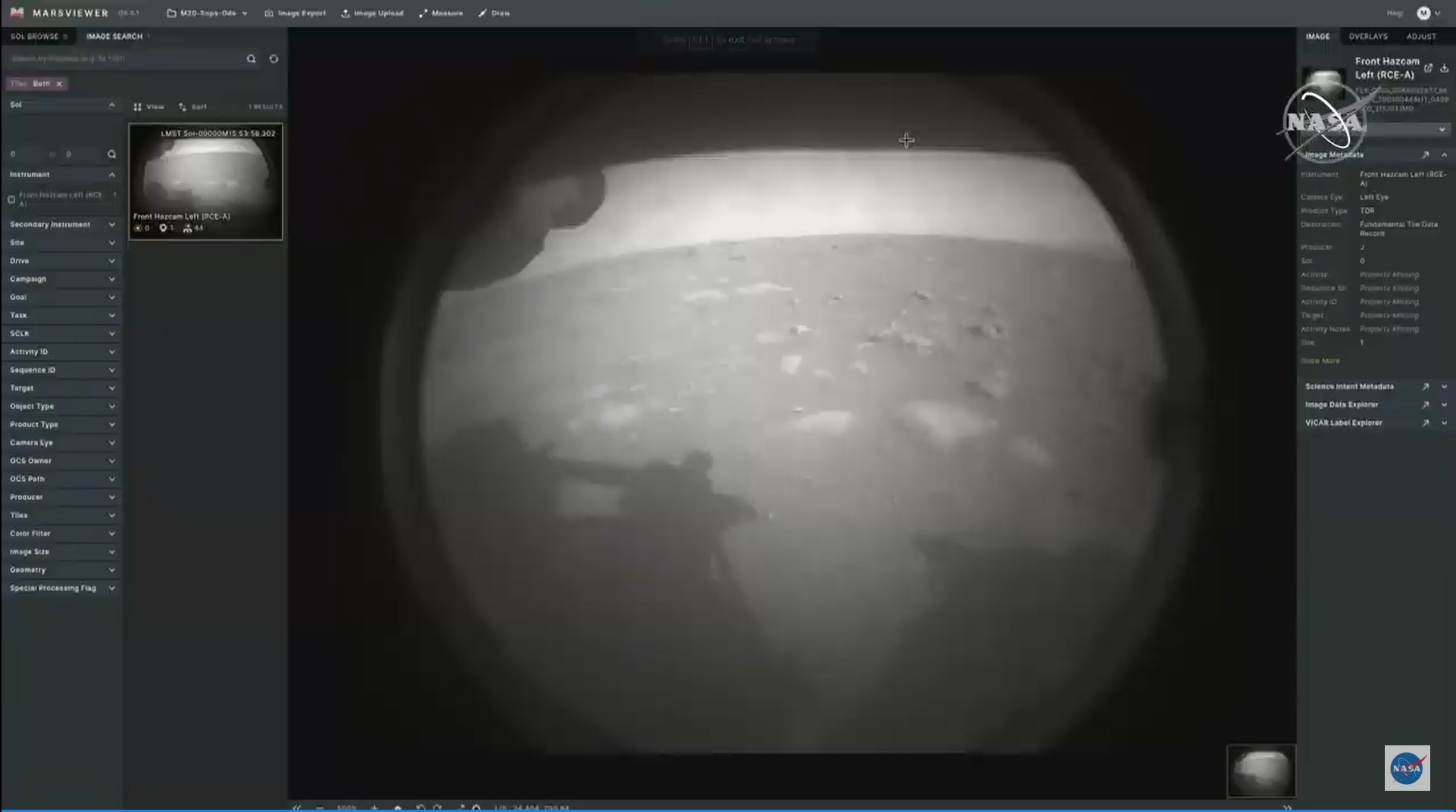
Book of Mars: $22.99 at Magazines Direct
Within 148 pages, explore the mysteries of Mars. With the latest generation of rovers, landers and orbiters heading to the Red Planet, we're discovering even more of this world's secrets than ever before. Find out about its landscape and formation, discover the truth about water on Mars and the search for life, and explore the possibility that the fourth rock from the sun may one day be our next home.
Persevering through a pandemic
Perseverance, the heart of NASA's $2.7 billion Mars 2020 mission, lifted off from Florida's Space Coast atop a United Launch Alliance Atlas V rocket on July 30, 2020.
That was about halfway through Perseverance's month-long launch window, which closed in mid-August. Such windows come along just once every 26 months for Mars missions, so NASA was determined to get the rover off the ground on time — a challenging task made even tougher by the coronavirus pandemic, which forced a rethink of assembly and testing protocols and made it harder for the team to travel.
Breaking space news, the latest updates on rocket launches, skywatching events and more!
"In March and early April, we weren't sure we were going to be able to make it," Jurczyk said. (Back then, the NASA chief was Jim Bridenstine, and Jurczyk led the agency's Space Technology Mission Directorate.)
"But we were able to work through the planning and get there," he added. "It's a real credit to the dedication and hard work of the team."
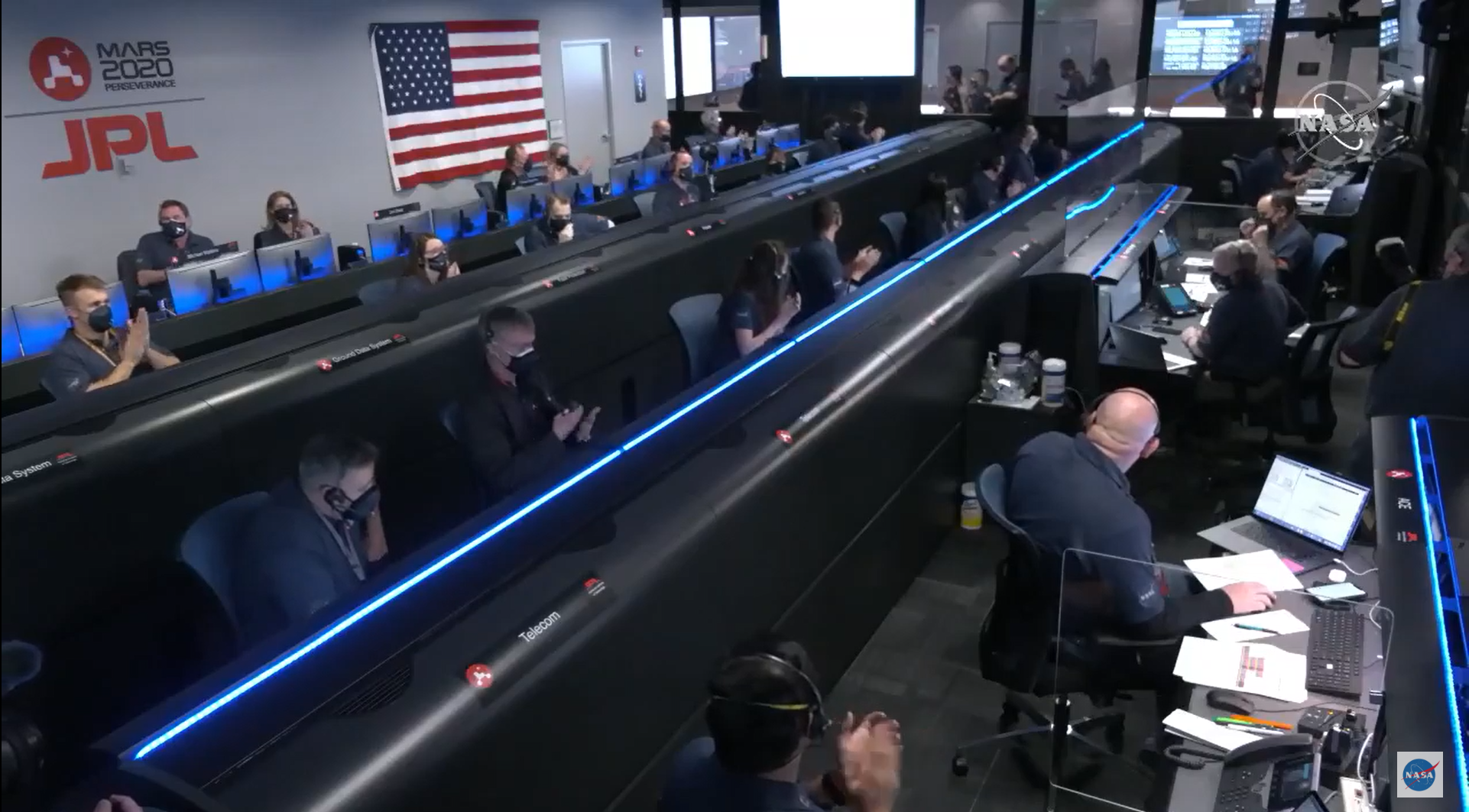
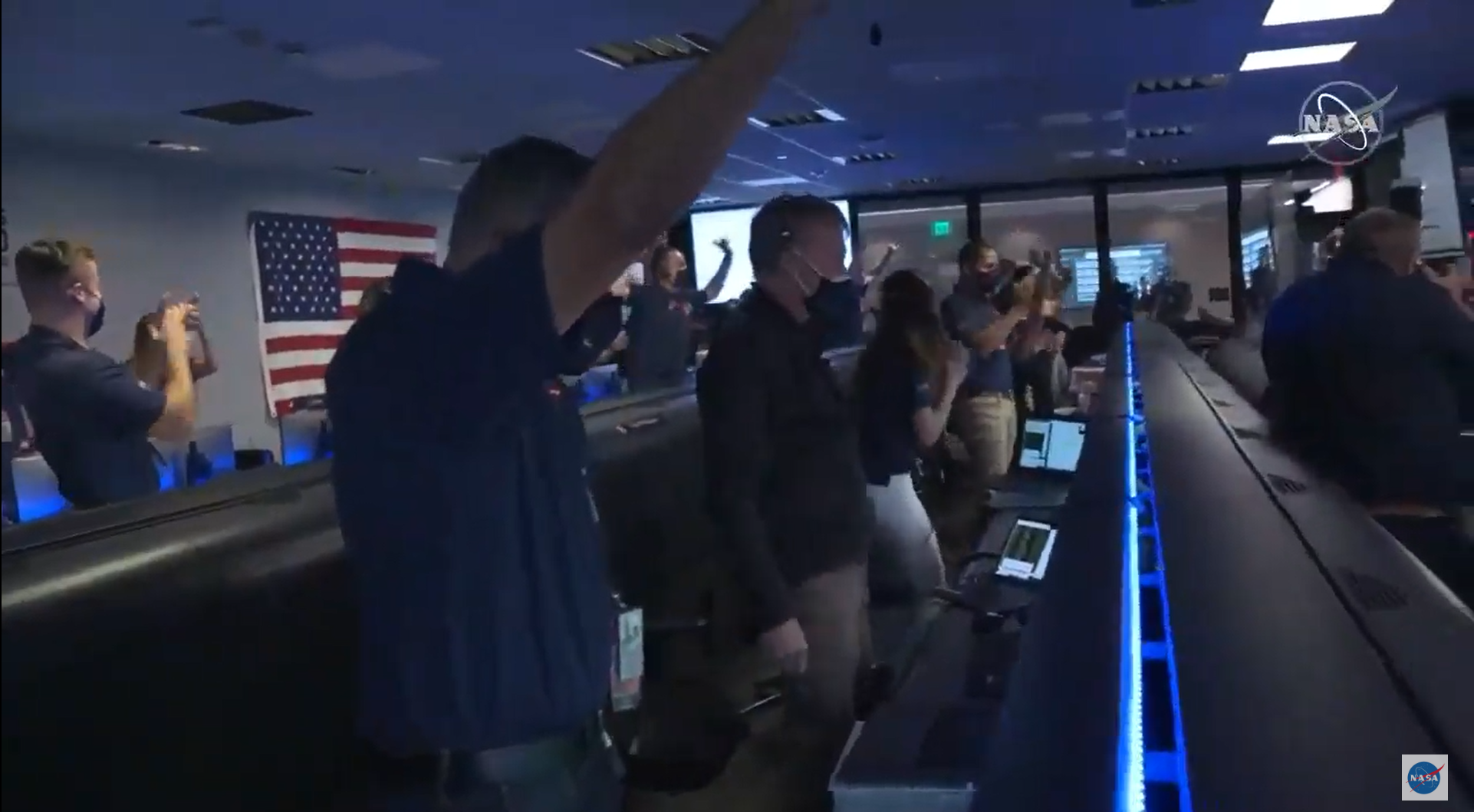

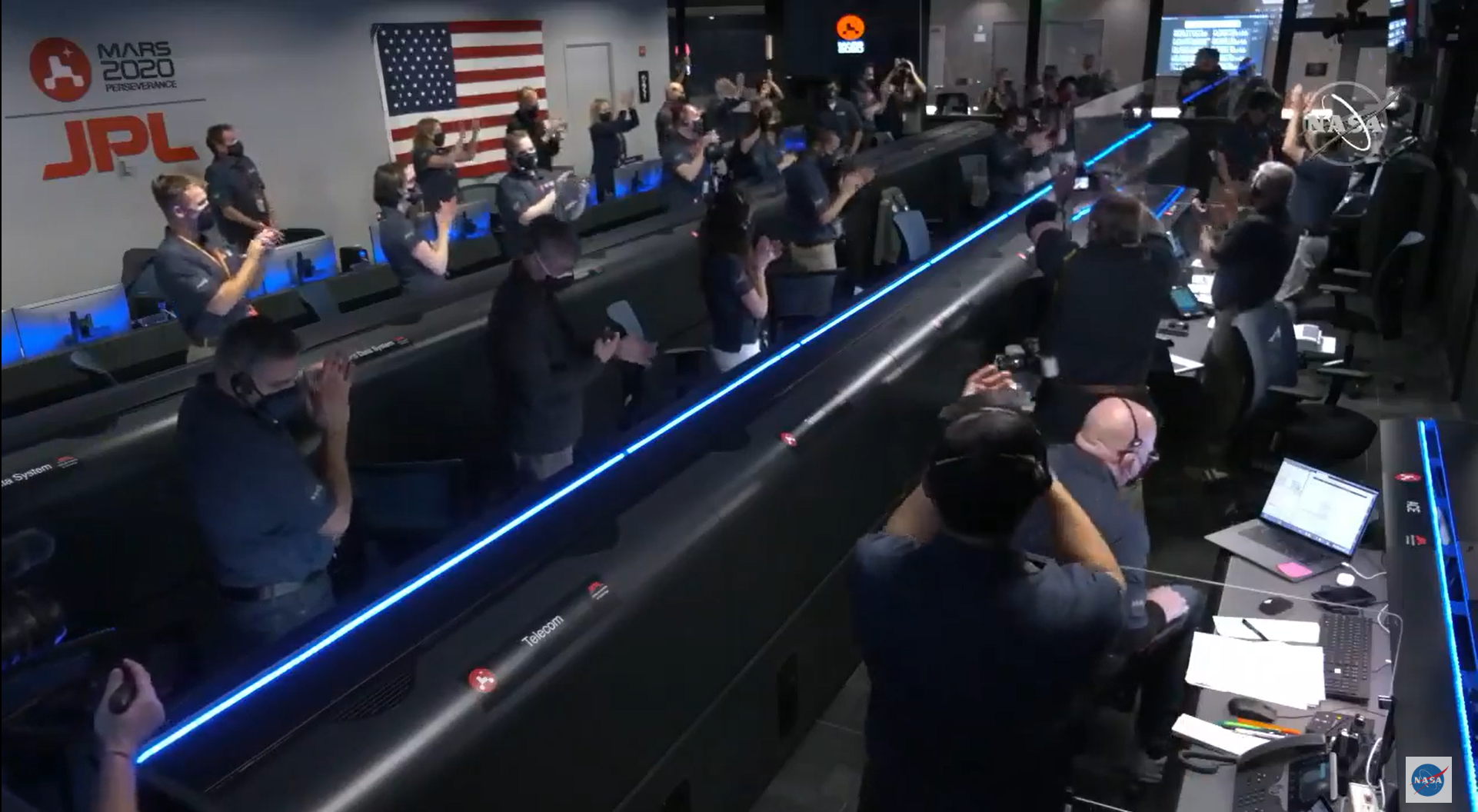
Join our forums here to discuss the Perseverance Mars rover landing. What do you hope finds?
The rover's name is a testament to the spirit that got the mission off the ground and on its way to Mars, agency officials have said.
"Perseverance is a strong word," Thomas Zurbuchen, associate administrator of NASA's Science Mission Directorate, said in March 2020 during the rover's naming ceremony. "It's about making progress despite obstacles."
Like NASA's other Mars rovers, Perseverance got its name via a nationwide student competition. The winning moniker was submitted by Alex Mather, at the time a seventh grader at Lake Braddock Secondary School in Burke, Virginia.
Related: The boldest Mars missions in history
Skycrane redux
The six-wheeled Perseverance is modeled heavily after its predecessor, NASA's Curiosity rover, which touched down inside Mars' huge Gale Crater in August 2012 and is still going strong today.
Perseverance is a few inches longer than Curiosity and, with a weight of 2,260 lbs. (1,025 kilograms), nearly 300 lbs. (136 kg) heavier. Some of their scientific instruments are also quite different. But the two rovers share the same basic body plan and the same type of nuclear power source, and they used the same strategy to land safely on the Red Planet.
That strategy, which Curiosity pioneered, sounds like something out of science fiction. Perseverance hit the Martian atmosphere at about 12,100 mph (19,500 kph) and deployed a 70.5-foot-wide (20.5 meters) parachute a few minutes later, while still traveling faster than the speed of sound.
But Mars' air is just 1% as thick as that of Earth, so a chute couldn't slow the rover down enough for a safe landing. Mars 2020 therefore employed a rocket-powered sky crane, which lowered the Mars car to the red dirt on cables, then flew off to crash-land intentionally a safe distance away.
NASA received word that Perseverance had gotten down safely at 3:55 p.m. EST (2055 GMT) today, about 11 minutes after the landing actually took place. (It currently takes that long for signals to travel from the Red Planet to Earth.) The news prompted wild celebrations at the Jet Propulsion Laboratory (JPL) in Southern California, which manages the Mars 2020 mission.
There was doubtless a decent dose of relief mixed in with the excitement, for success today was far from guaranteed. Over the decades, only about half of Mars surface missions have touched down safely. And Perseverance's landing site on Jezero's floor, which features hazards such as cliffs, sand dunes and boulder fields, was the toughest ever targeted by a Mars mission, NASA officials have said.
Indeed, this dangerous terrain required Perseverance to make the most precise Red Planet touchdown ever. The rover's landing ellipse was just 4.8 miles long by 4.1 miles wide (7.7 by 6.6 kilometers), compared to 4 miles by 12 miles (7 by 12 km) for Curiosity.
Perseverance hit that target today with the aid of two new entry, descent and landing (EDL) technologies that Curiosity didn't have at its disposal. One, called "range trigger," allowed the mission to deploy its supersonic parachute at just the right moment. The other, "terrain-relative navigation," enabled Perseverance's sky crane to assess the Jezero landscape and navigate autonomously around potential hazards during the descent.
These landing technologies worked exactly as planned, guiding Perseverance to a picture-perfect touchdown on a safe, flat part of Jezero's floor, mission team members said during a post-landing news conference this afternoon.
And the rover seems to have made it through EDL in fine shape. Perseverance has already beamed home its first images of its new surroundings, and initial health checks revealed no causes for concern.
"The power system looks good," Mars 2020 deputy project manager Jennifer Trosper, also of JPL, said during today's briefing. "The batteries are charged at 95%, and everything looks great."
Looking for Mars life
Curiosity is a habitability-assessing mission, and that rover has found plenty of evidence that Gale Crater could have supported Earth-like life billions of years ago. Perseverance will take the next step, actively searching for signs of past organisms in the first life hunt conducted on the Martian surface since NASA's twin Viking landers ceased operations in the early 1980s. (The Vikings looked for present-day Mars life, however, whereas Perseverance is focused on the distant past.)
Jezero is a great place to do such work, mission team members have said. The crater, which lies about 18 degrees north of the Martian equator, hosted a lake the size of Lake Tahoe long ago and also sports an ancient river delta. In addition, Mars orbiters have spied on Jezero's floor clay minerals, which form in the presence of liquid water.
Perseverance will scrutinize Martian dirt and rock with a variety of high-tech science gear, including multiple spectrometers, high-resolution cameras and ground-penetrating radar. One of the rover's seven instruments, called SuperCam, will zap rocks with a laser and gauge the composition of the resulting vapor.
Such observations could potentially identify a convincing sign of ancient Mars life — perhaps something akin to stromatolites, structures created here on Earth by dirt-trapping microbial mats. But that's a tall order for a lonely robot far from home. A positive ID of Martian life, if it ever existed, will likely require analyses by advanced equipment in laboratories here on Earth, NASA officials have said. And Mars 2020 aims to help make that happen.
Related: The search for life on Mars (a photo timeline)
A Mars sample-return campaign begins
Using the drill at the end of its long robotic arm, Perseverance will collect about 40 samples from especially promising sites and seal them inside special tubes. This material will then be brought back to Earth by a joint NASA-European Space Agency campaign, perhaps as early as 2031.
Once here, the samples will be studied in countless ways by hundreds of scientists for decades to come. Researchers are still poring over the moon rocks hauled home by NASA's Apollo astronauts half a century ago, after all, and that material has no serious astrobiological potential.
"Mars sample return is the planetary science endeavor of our generation," Bobby Braun, director of solar system exploration at JPL, said during a pre-landing news conference yesterday (Feb. 17).
"It's ambitious. It's challenging. It's a scientifically compelling goal that, over decades, we have been working toward," Braun said. "And it's right there. It's just within our reach."
Demonstrating future exploration tech
Mars 2020 will also pave the way for more ambitious exploration of the Red Planet in the future, if all goes according to plan.
For example, one of Perseverance's instruments, called MOXIE ("Mars Oxygen ISRU Experiment"), is designed to generate oxygen from the Red Planet's atmosphere, which is 95% carbon dioxide by volume. Such equipment, if scaled up, could help humanity get a foothold on Mars down the road, NASA officials have said. ("ISRU," by the way, is short for "in situ resource utilization," a fancy term for living off the land.)
And attached to Perseverance's belly is a 4-lb. (1.8 kg) helicopter named Ingenuity, which will attempt to become the first rotorcraft ever to fly in the skies of a world beyond Earth. If Ingenuity succeeds, helicopters could soon become an important part of the Mars-exploration toolkit.
"We could put sensors on them and use them as science platforms, and also as scouts," Jurczyk said. Aerial reconnaissance by rotorcraft could allow rovers to "drive more autonomously, and drive faster and longer on the surface," he added.
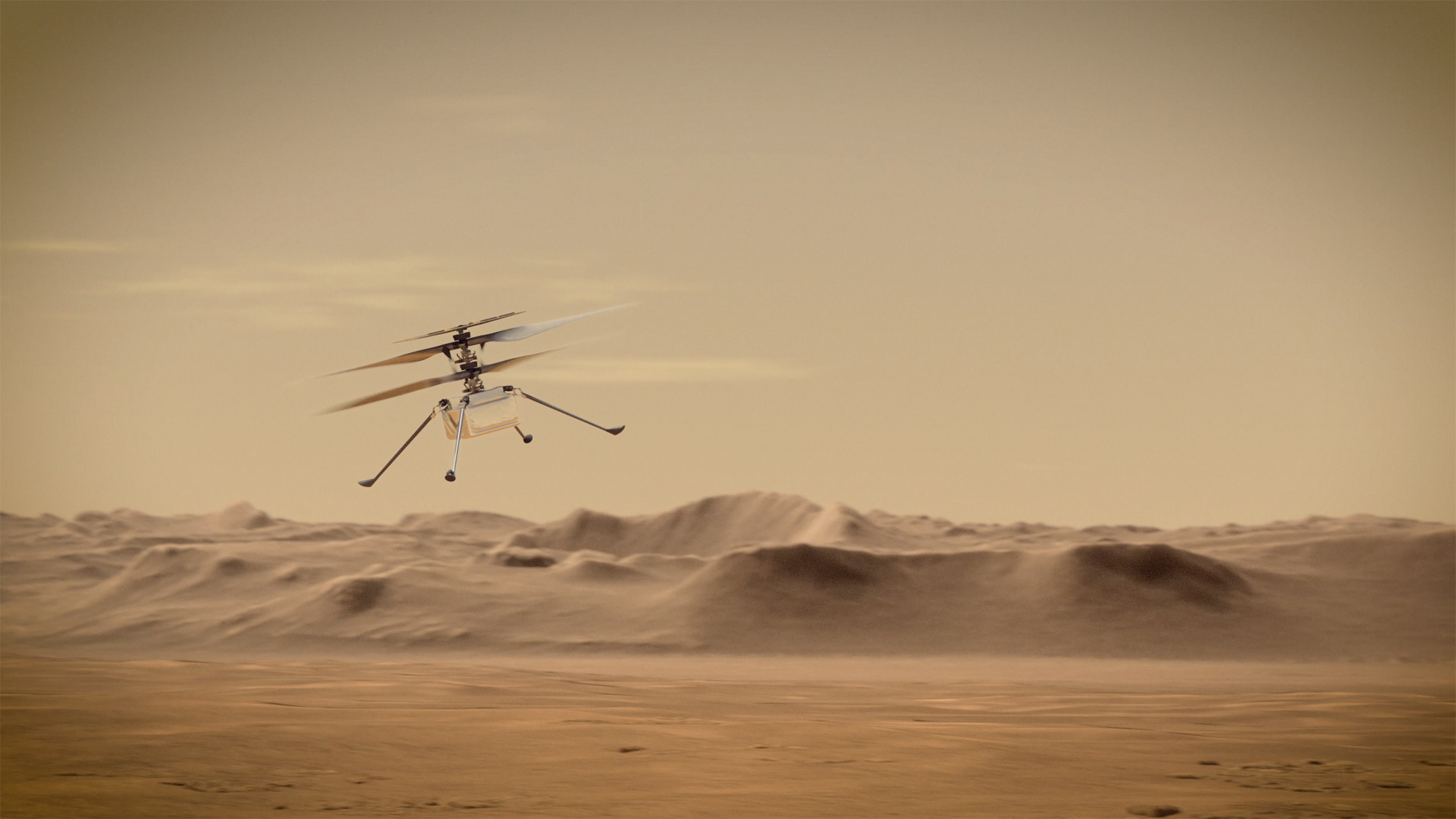
Ingenuity will get to strut its stuff soon. The little helicopter will conduct its few test flights very early in the mission, shortly after the Mars 2020 team assesses the condition of the rover and calibrates its science instruments. Perseverance will roll a safe distance away before Ingenuity lifts off, but the rover might still be able to document the flights — perhaps with its cameras or its two microphones.
Those two mics — which are part of SuperCam and the EDL subsystem, respectively — are another groundbreaking aspect of Mars 2020: No mission has ever successfully captured true audio on the Red Planet's surface. So, if either mic is able to record some Martian sounds, Perseverance will bring this alien world to life for us in a new way.
These initial activities — the checkouts and Ingenuity's demonstration flights — will likely take several months, Mars 2020 team members have said. Perseverance will then be ready to start its main science work, the hunt for biosignatures and the collection of samples.
The mission team has already mapped out a tentative traverse for Perseverance. If all goes according to plan, the rover will start its studies in Jezero's delta region, then move toward ancient lakeshore environments and eventually climb up onto the crater's rim, which sits several thousand feet above its floor.
"This will allow us to come up with the best possible set of samples to be brought back to Earth, to answer the major questions that we have about Mars and about life," Mars 2020 project scientist Ken Farley, who's based at JPL, said during a news conference last month.
The envisioned traverse is about 15 miles (25 km) long and will take Perseverance a number of years to complete, Farley added. The rover's prime mission lasts just one Mars year (about 687 Earth days), so Mars 2020 would need some extensions and continued good health to make it all the way to Jezero's rim.
But there's reason to be hopeful that it can happen. After all, Curiosity is well into its ninth Earth year exploring Gale, about 2,300 miles (3,700 km) from Perseverance's new digs.
Perseverance's landing came just a week after two other Mars missions reached the Red Planet. The United Arab Emirates' Hope probe and China's Tianwen-1 mission slipped into Mars orbit on Feb. 9 and Feb. 10, respectively, landmark achievements for both nations. Hope will remain in orbit, as will one component of Tianwen-1. But the Chinese mission will also put a rover duo down on the Martian surface, likely in May.
This story was updated at 8 pm EST on Feb. 18 with information from the post-landing news conference.
Mike Wall is the author of "Out There" (Grand Central Publishing, 2018; illustrated by Karl Tate), a book about the search for alien life. Follow him on Twitter @michaeldwall. Follow us on Twitter @Spacedotcom or Facebook.
Join our Space Forums to keep talking space on the latest missions, night sky and more! And if you have a news tip, correction or comment, let us know at: community@space.com.

Michael Wall is a Senior Space Writer with Space.com and joined the team in 2010. He primarily covers exoplanets, spaceflight and military space, but has been known to dabble in the space art beat. His book about the search for alien life, "Out There," was published on Nov. 13, 2018. Before becoming a science writer, Michael worked as a herpetologist and wildlife biologist. He has a Ph.D. in evolutionary biology from the University of Sydney, Australia, a bachelor's degree from the University of Arizona, and a graduate certificate in science writing from the University of California, Santa Cruz. To find out what his latest project is, you can follow Michael on Twitter.

